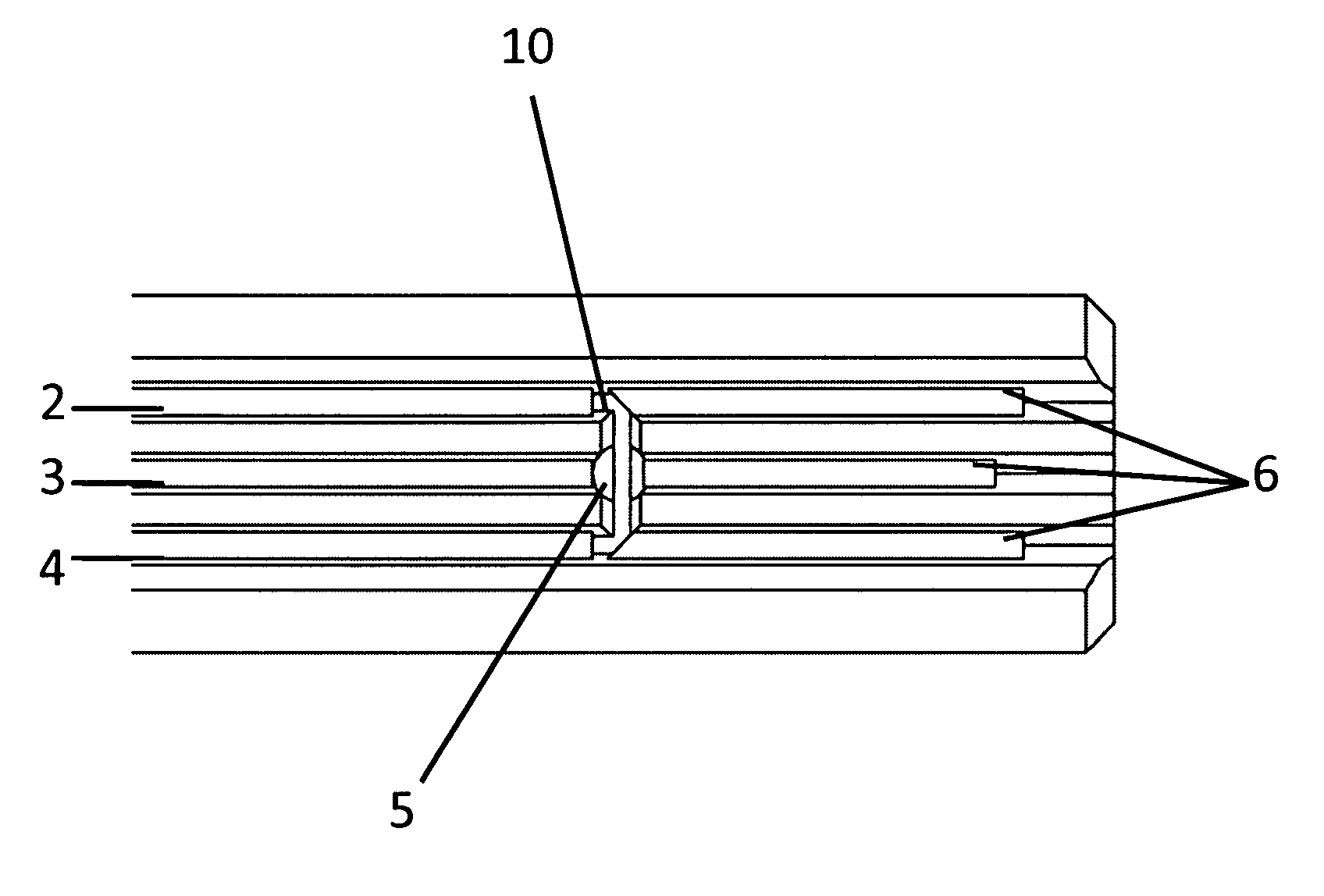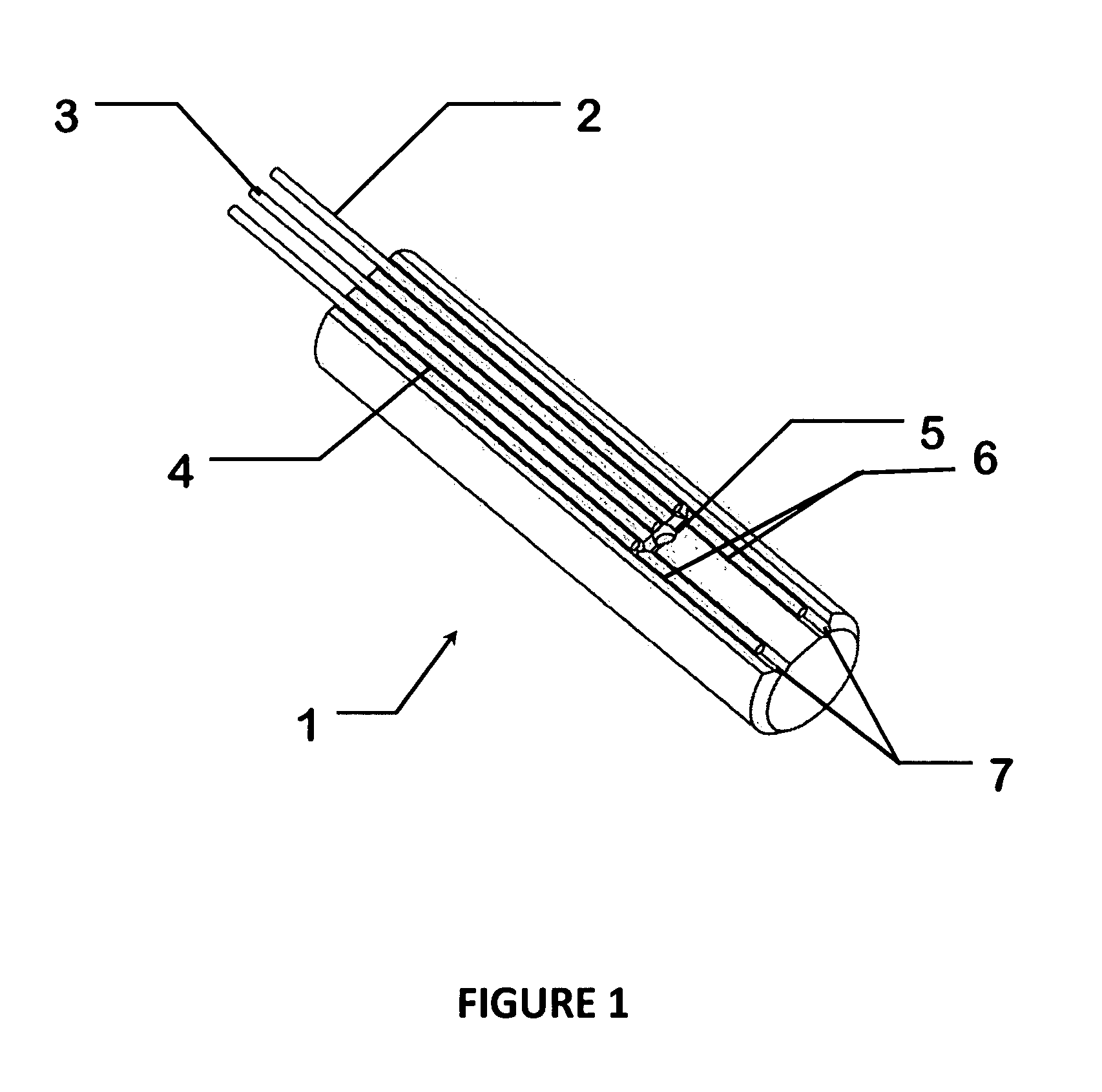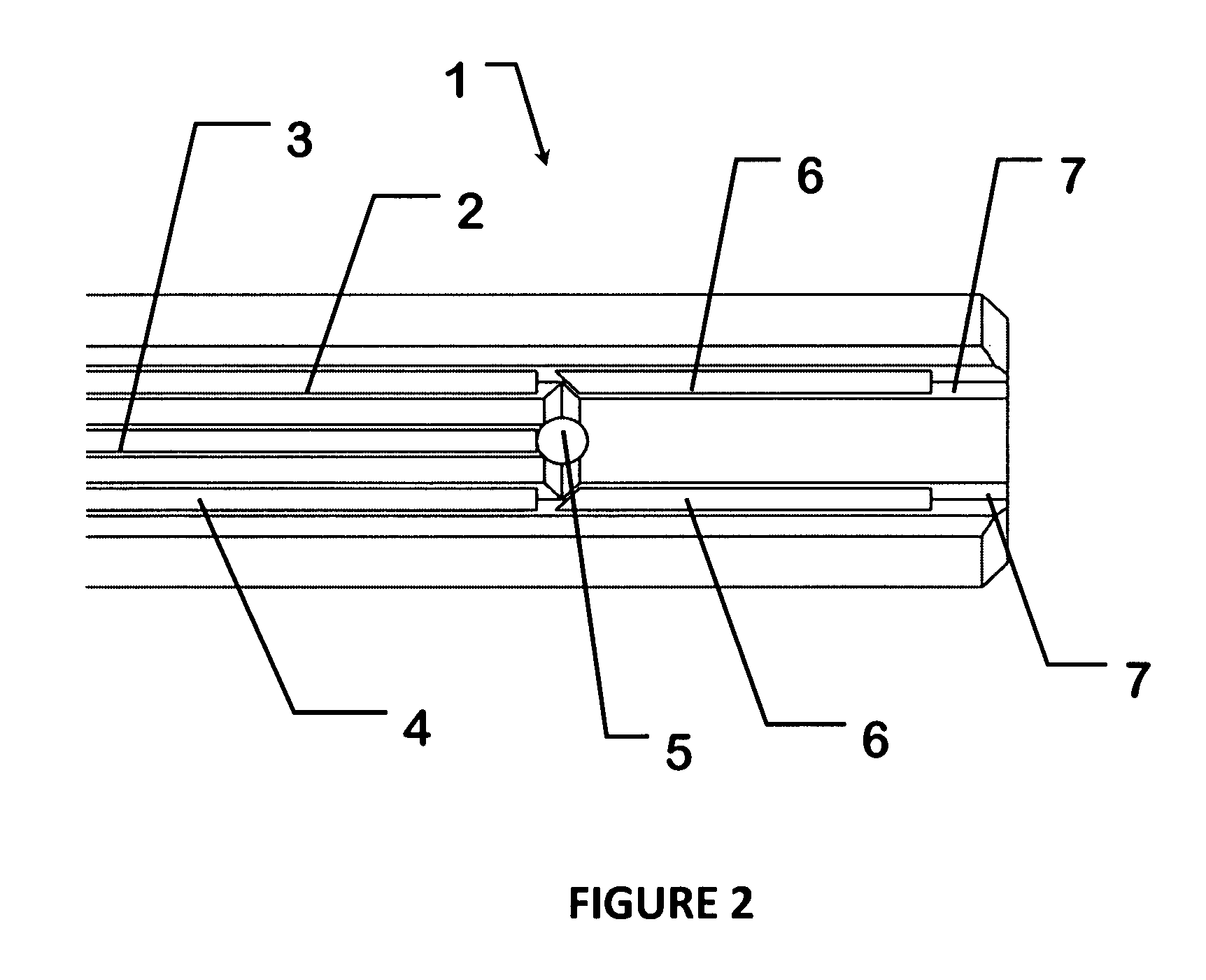Means and methods for cytometric therapies
a cytometric and cytometric technology, applied in the field of cytometric therapy, can solve the problems of compromising cell survival or even disrupting the architectural remodeling of vascular, glial and neuronal graft elements, and achieve the effects of maximizing the chances of implant survival, minimizing delivery time and tissue damage, and confirming cell coun
- Summary
- Abstract
- Description
- Claims
- Application Information
AI Technical Summary
Benefits of technology
Problems solved by technology
Method used
Image
Examples
example 1
An Example of a Catheter of the Present Invention
[0061]A modular tip compatible has been designed which incorporates optical fibers for the cytometric determination the number of viable cells exiting the port of the cell monitoring device. The catheter tip was machined from common brass, but for clinical prototypes, it might be made from a biocompatible material such as stainless steel, titanium or some MR-safe material. The CMD tip may be attached at the end of a catheter tube and contains a series of grooves for mounting the optical fibers as well as the catheter exit port. The fiber mounting grooves allow for the self-alignment of five optical fibers such that they are parallel to each other. Two fibers are polished at a 45° angle and coated with chrome such that they function as turning mirrors. The turning-mirror fibers require manual rotational and axial alignment. These fibers work together such that a beam of ultraviolet light for fluorescence excitation is delivered across ...
example 2
Fluorescence Measurements
[0065]Petri dish experiments were performed with the fibers mounted in the configuration of FIGS. 15 and 16. Cell suspensions in aliquots of 0.25 mL were placed in the viewing field of this setup and fluorescence measurements were made. GFP transfected 3RT1 cells and non-transfected RT2A rat gliomal cells stained with CellTracker™ Orange (Invitrogen Corporation, Carlbad, Calif.) were used in these experiments. A stock solution of GFP cells at a density of 1.2×106 per milliliter and of RT2A cells at 5.1×105 per milliliter was used for this work. Cells were suspended in phosphate-buffered saline solution (PBS). Results of these experiments verify that the cell fluorescence can be detected using the fiber optic configuration, and that the total flourescence detected varies with cell density. Some variability in results was noted and is attributed to rapid settling of the cells in the medium. Laser excitation at 458 nm was used for GFP cells and at 488 nm for th...
PUM
 Login to View More
Login to View More Abstract
Description
Claims
Application Information
 Login to View More
Login to View More - R&D
- Intellectual Property
- Life Sciences
- Materials
- Tech Scout
- Unparalleled Data Quality
- Higher Quality Content
- 60% Fewer Hallucinations
Browse by: Latest US Patents, China's latest patents, Technical Efficacy Thesaurus, Application Domain, Technology Topic, Popular Technical Reports.
© 2025 PatSnap. All rights reserved.Legal|Privacy policy|Modern Slavery Act Transparency Statement|Sitemap|About US| Contact US: help@patsnap.com



